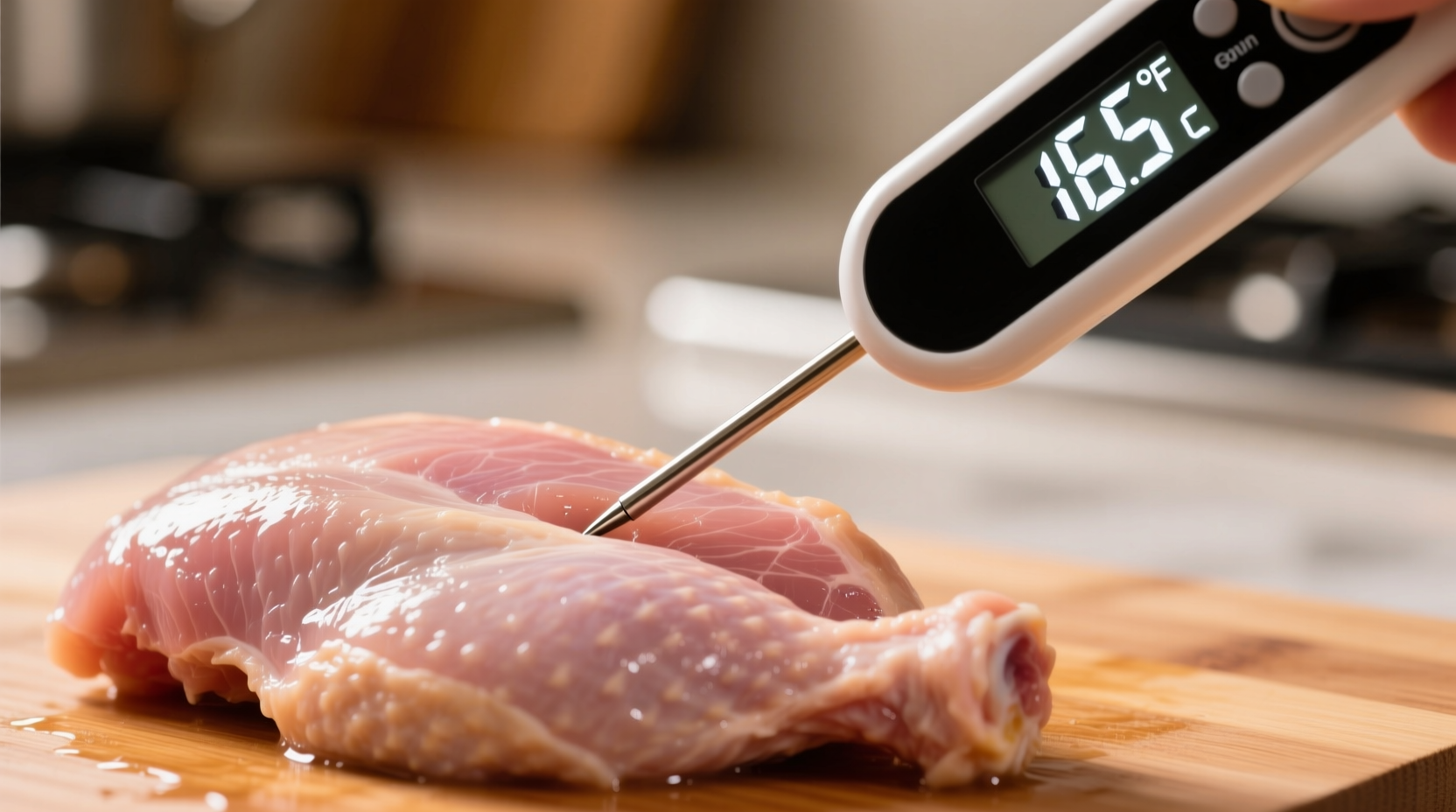Chicken must reach an internal temperature of 165°F (74°C) to be safe to eat. This temperature kills harmful bacteria like Salmonella and Campylobacter that can cause foodborne illness. Use a food thermometer to verify—never rely on color or texture alone.
The Critical Temperature for Safe Chicken Cooking
When cooking chicken, getting the temperature right isn't just about taste—it's a food safety imperative. The United States Department of Agriculture (USDA) and Food and Drug Administration (FDA) both mandate that all poultry must reach 165°F (74°C) internally to eliminate dangerous pathogens. This isn't a suggestion; it's the scientifically verified threshold that destroys harmful bacteria including Salmonella and Campylobacter.
Why 165°F Is Non-Negotiable for Chicken Safety
Unlike beef or pork, chicken requires higher temperatures because of how bacteria penetrate its structure. Salmonella can live deep within poultry muscle tissue, not just on the surface. At 165°F, bacteria die almost instantly—reducing from 10 million organisms to just 10 in under a second.
| Temperature | Bacteria Reduction Time | Food Safety Status |
|---|---|---|
| 150°F (66°C) | 2.8 minutes | Risk of illness |
| 155°F (68°C) | 47.7 seconds | Unsafe for general consumption |
| 160°F (71°C) | 14.8 seconds | Still risky |
| 165°F (74°C) | Instant kill | Safe for all consumers |
How Temperature Requirements Have Evolved
Food safety guidelines aren't static—they evolve with scientific understanding. Prior to 2006, the USDA recommended cooking chicken to 180°F, causing unnecessarily dry meat. Research showed that 165°F provided equivalent safety with better texture. This change reflects ongoing refinement in food science based on bacterial kill rates at various temperatures.
Measuring Temperature Correctly: Avoiding Critical Mistakes
Proper temperature measurement is where most home cooks fail. Follow these steps for accuracy:
- Use the right thermometer: Digital instant-read thermometers are most reliable (tested to ±0.5°F accuracy)
- Place correctly: Insert into the thickest part of the meat, avoiding bone or fat pockets
- Check multiple spots: Especially in whole birds or stuffed poultry
- Verify before removing from heat: Temperatures continue rising during resting
A common misconception is judging doneness by clear juices or firm texture. The USDA confirms these visual cues are unreliable—undercooked chicken can still produce clear juices while appearing firm.

Temperature Requirements by Chicken Cut
While 165°F applies universally, different cuts require different approaches:
- Breasts: Remove from heat at 160°F—carryover cooking will reach 165°F during 5-minute rest
- Thighs/Drumsticks: Can be removed at 160°F but benefit from resting to 170°F for optimal texture
- Whole chicken: Check multiple points including breast, thigh, and wing joints
- Ground chicken: Must reach 165°F throughout due to increased surface area
Special Cooking Methods and Temperature Considerations
Certain cooking techniques require special attention to temperature dynamics:
- Sous vide: Can cook at lower temperatures (145°F for 30+ minutes) but requires precise time control
- Smoking: Must still reach 165°F internally despite lower ambient temperatures
- Slow cooking: Ensure chicken spends minimal time in the danger zone (40°F-140°F)
The CDC reports that improper poultry cooking contributes to approximately 200,000 cases of foodborne illness annually in the United States. Using a thermometer reduces this risk by 90% compared to visual estimation.
Resting Time: The Critical Final Step
After reaching 165°F, let chicken rest for 3-5 minutes. During this time:
- Temperature continues rising 5-10°F (carryover cooking)
- Juices redistribute for better texture
- Final safety margin is established
Debunking Common Chicken Cooking Myths
Several persistent myths endanger food safety:
- "Pink chicken is always unsafe": Certain cooking methods can leave safe chicken slightly pink
- "Clear juices mean it's done": USDA testing shows undercooked chicken can have clear juices
- "I've eaten undercooked chicken before with no issues": Bacterial load varies—don't risk it
Essential Tools for Perfect Chicken Every Time
Invest in these temperature-critical tools:
- Digital instant-read thermometer (Thermapen-style)
- Oven-safe probe thermometer for roasting
- Calibration ice bath (32°F) or boiling water (212°F) for checking accuracy











 浙公网安备
33010002000092号
浙公网安备
33010002000092号 浙B2-20120091-4
浙B2-20120091-4